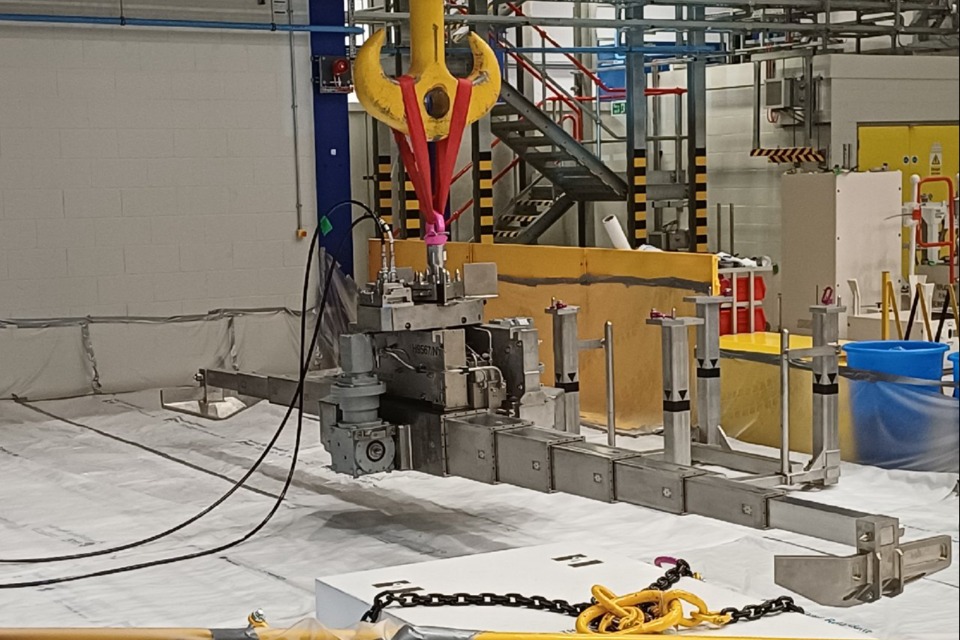Sellafield teams have successfully removed 70 tonnes of radioactive waste from one of Sellafield’s most hazardous legacy facilities, the Magnox Chip Storage Silo.
Removing radioactive waste from this legacy facility is a key step forward in one of the UK’s most difficult nuclear decommissioning operations, as it provides long-term safe interim storage for the waste.
But as is often the case with nuclear decommissioning efforts, success comes with challenges.
Phil Reeve, head of legacy silos at Sellafield, explained: “As we scooped the waste out of compartment 10 of the silo, we dug a seven meter crater in its centre. This creates a risk that waste around the edges could suddenly collapse into it.”
How can a garden rake help solve these problems?
An innovative twist on traditional gardening tools can solve these problems.
The answer is Sellafield’s version of a garden rake. A 1.4-ton machine with stainless steel arms that extend outward to pull nuclear waste into the center and flatten it.
“Rakes have been developed in parallel with recovery machinery, so it’s a big moment to see rakes successfully introduced into a real-world environment for the first time,” commented Reeve.
Andrew Prince, team leader for the Magnox swarf storage silo, added: “Deploying the rake for the first time in Compartment 10 was a major milestone. This is one of the most challenging areas on the Sellafield site and the successful operation gives us real confidence in our extensive recovery programme.”
“This achievement reflects the dedication of Sellafield and our large team across our supply chain.”
Why is nuclear decommissioning so important?
At the end of a nuclear facility’s useful life, nuclear decommissioning is necessary to ensure the long-term safety of people and the environment.
Over time, the materials within a nuclear reactor become highly radioactive and pose serious health and environmental risks if not properly managed and controlled.
Decommissioning safely removes and contains these hazards to prevent potential leakage, contamination, or accidental exposure. It also enables responsible disassembly and disposal of radioactive components and waste, ensuring compliance with stringent national and international safety regulations.
Additionally, decommissioning frees up land for future uses, including industrial redevelopment, renewable energy projects, and environmental restoration.
Without proper decommissioning, aging nuclear facilities can become a dangerous and expensive liability for future generations.
Decommissioning is therefore an important process that supports sustainability, public safety, and environmental protection while maintaining an ethical responsibility to safely manage nuclear technology throughout its lifecycle.
Nuclear waste cleanup programs are complex processes
The removal of waste from the silos began in 2022 after 20 years of careful preparations.
The recovery effort is particularly complex because the building’s original design dates from the 1960s and did not take into account future waste removal.
Renovating the exit route required an arduous process. This involved assembling a huge collection machine, known as a Silo Ejection Plant (SEP) machine, on top of the building’s vast waste section.
Currently, one machine is operational and two more are expected to be operational soon. All material recovered so far has come from compartment 10 of the silo.
Source link

